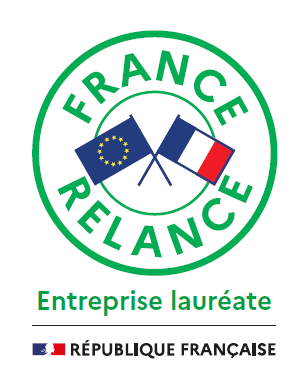Quantum Dots in Industry
Quantum Dots and the Display Market
With precise control of the emission wavelength on any range of the visible light spectrum, Quantum Dots can significantly extend the range of colors displayable by a screen. This produces colors that are more accurate, pure and saturated than competing technologies.
While several major manufacturers, Samsung, Hisens and TCL, already offer Quantum Dots-based products, their massive adoption still faces problems of industrial implementation. The current integration techniques do not, in practice, make the best use of the Quantum Dots qualities, and are expensive to implement. The solutions provided by Nexdot, by encapsulation, and the support of the manufacturers in the development of their processes will give a clear advantage to Quantum Dot technologies compared to OLEDs, whose manufacturing costs will remain very high, for lower performance.
Quantum Dots also offer the opportunity to reduce the power consumption of screens, while increasing the light intensity. This is a crucial point for all mobile devices, with a major impact on battery life.
Finally, beyond the first generation of screens that will use the Quantum Dots as color filters, we are already considering the possibility of using Quantum Dots by electro-emissivity, without the need for an additional light source, for superior performance and drastically reduced energy consumption.
Optimizing Lighting Equipment with Quantum Dots
Quantum Dots can emit at the desired wavelength by controlling their size. By additive synthesis, we can design filters to obtain any type of white light suitable for interiors and public place lighting.
In this context, in addition to the accuracy of the color temperature of the light obtained, the Quantum Dots are able to transmit a much larger proportion of the filtered light. In practice, we obtain a greater light intensity for equal consumption, or a lower consumption for the same light intensity. As energy consumption is a central issue in the design of lighting equipment, the adoption of Quantum Dots by this sector will be rapid.
In this field, the constraints are quite different from those of the screen market. It is essential that Quantum Dots have a high resistance to heat, and a very long life. On these two points, encapsulated Quantum Plates developed by Nexdot are the most efficient solution today.
Photo-Detection
Quantum Dots allow detection of a specific wavelength range, from ultraviolet to infrared. It is possible to integrate Quantum Dots into photodetector devices, offering many possibilities in the field of lasers and computers. The use of Quantum Dots in this sector results in a significant reduction in production costs.
Biomedical Applications
The fluorescence of Quantum Dots and the possibility to fine-tune emission frequencies make them very interesting markers for biomedical applications.
For example, they allow us to detect, quantify and locate certain molecules on samples taken from patients and are already used by some in vitro diagnostic methods.

